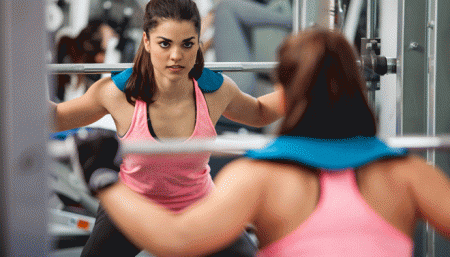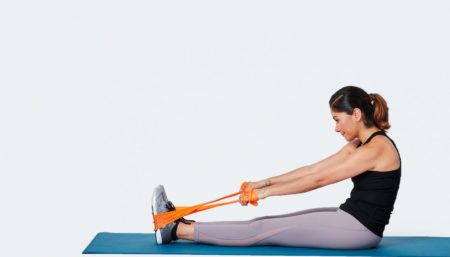
When the final goal, is muscle development one needs to understand the factors that stimulate muscle growth.
- Stretching tension. When a contracted muscle is not ready to lengthen to its stretched position, and the muscle is moved forcefully by a weight, the confrontation of those two resistances causes a lot of cellular damage. That is exactly what happens during the negative phase of a repetition, a weight-muscle confrontation that damages the fibers and forces the body to repair itself and grow. The stretching tension is a powerful signal for growth, and you should accentuate the negative phase for each repetition.
- Contraction tension. When a muscle has difficulty contracting because of the force exerted by a very heavy weight, the muscle must strengthen itself, to ensure that you provoke a significant muscle-building response, you must continually apply force on your muscles by using heavier and heavier weights.
- Time under tension. The weight used during a workout is not the only factor that affects muscle growth. The amount of time that the muscle remains under tension also plays a fundamental role. If too light a weight is used, the time under tension will be longer, but the force of the contraction will be too weak for muscles to take notice of the growth signal. Find an ideal compromise between absolute tension and time under tension. Scientific research shows the compromise to be a weight that is about 70 to 80 percent of the maximum strength.
- Muscle burn. The arrival of lactic acid in the muscles means that they have reached the end of what they can endure metabolically. Enduring this burn for as long as possible takes the muscles to the edge of metabolic rupture. Muscle burn is another means of progressing that is different from the heavy, traumatic work that exploits stretching tension, contraction tension, and time under tension.

- Muscle pump. As someone continues doing repetitions, his or her muscles fill with blood. Called muscle pump, this blood flow brings nutrients and “deforms” the muscles in an unusual fashion. The more intense the muscle pump is, the more the muscle fibers are pressed together. Because muscle pump training is not traumatic, it can be done frequently, especially as a way of accelerating recuperation.
WHEN TO STRETCH
Stretching a cold muscle can cause injuries that can range from minor strains to actual tears. Research shows that stretching the muscle you’re about to train can cause a significant loss of strength during your lifts. In other words, you may cause yourself to utilize less weight than you are capable of simply because you stretched the muscle beforehand. The same goes for stretching during the workout. Yes, it may feel good and help to increase blood flow a bit, but you would be better off giving the muscle you are training a light massage between sets instead.
Stretching correctly however during training could actually increase strength and improve recovery between sets. What you want to do while training is stretch the antagonistic muscle to the one you are working. In others words, stretch the hamstrings after some leg presses, or the lats after each set of bench presses.
A Word of Caution
Loaded static stretches can be dangerous if performed incorrectly, so use moderate weights, be cautious with the degree of stretch, and only go deep enough to feel it in the targeted muscle instead of the joints or ligaments.
When you start to feel it in the wrong places, drop the weights to the floor or rack them!
Disclaimer
The Content is not intended to be a substitute for professional medical advice, diagnosis, or treatment. Always seek the advice of your physician or other qualified health provider with any questions you may have regarding a medical condition.



